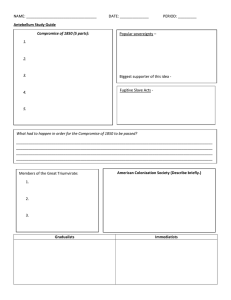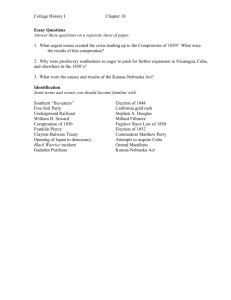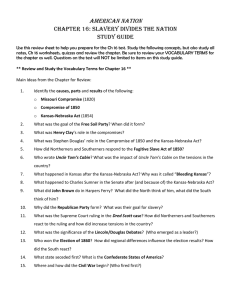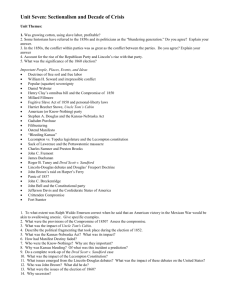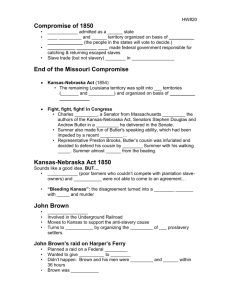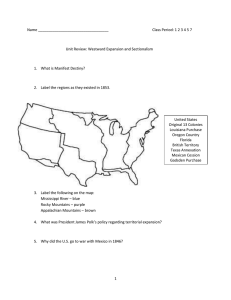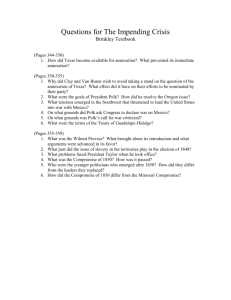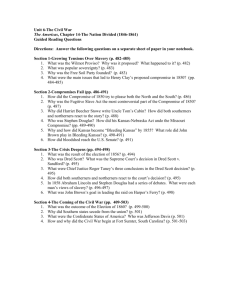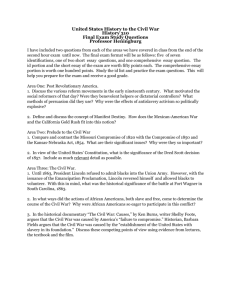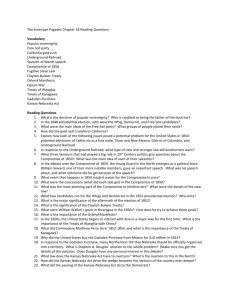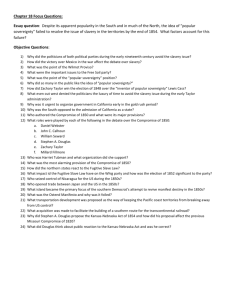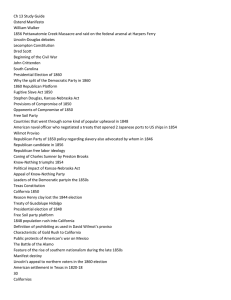APUSH
advertisement
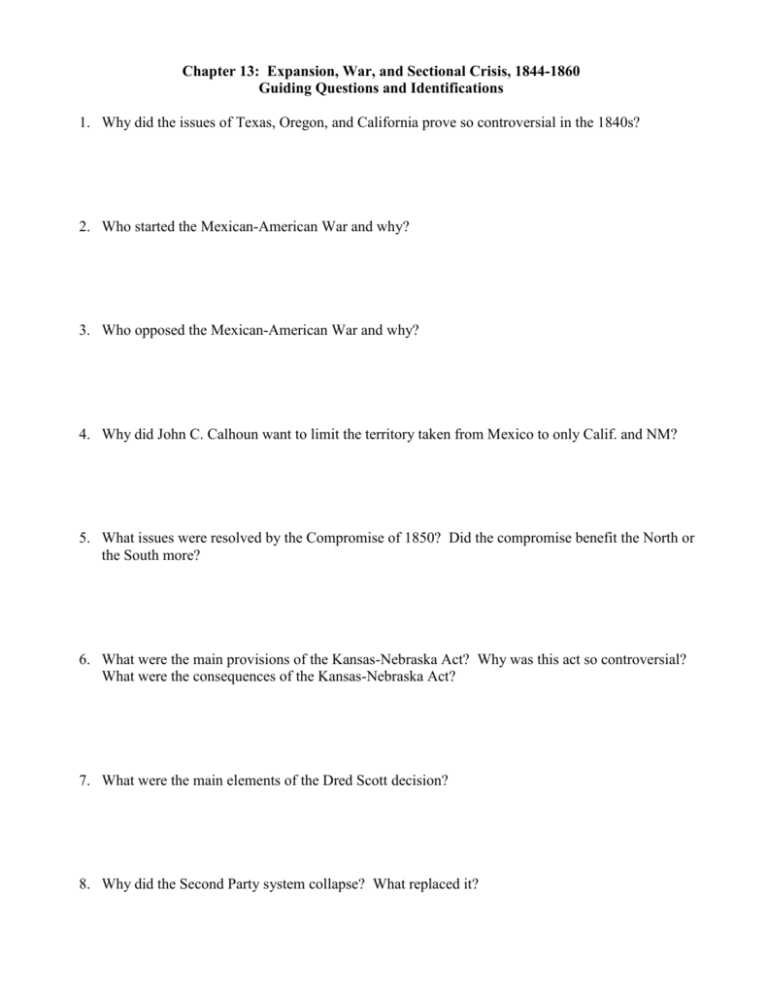
Chapter 13: Expansion, War, and Sectional Crisis, 1844-1860 Guiding Questions and Identifications 1. Why did the issues of Texas, Oregon, and California prove so controversial in the 1840s? 2. Who started the Mexican-American War and why? 3. Who opposed the Mexican-American War and why? 4. Why did John C. Calhoun want to limit the territory taken from Mexico to only Calif. and NM? 5. What issues were resolved by the Compromise of 1850? Did the compromise benefit the North or the South more? 6. What were the main provisions of the Kansas-Nebraska Act? Why was this act so controversial? What were the consequences of the Kansas-Nebraska Act? 7. What were the main elements of the Dred Scott decision? 8. Why did the Second Party system collapse? What replaced it? Identifications: 13.1 Manifest Destiny: South and North Manifest Destiny Oregon Trail & “Oregon fever” Californios Election of 1844 (Go Henry Clay?) James K Polk 1844 “Fifty-four forty or fight!” annexation of Texas 13.2 War, Expansion, and Slavery, 1846-1850 Mexican-American War 1846-1848 conscience Whigs Wilmot Proviso Treaty of Guadalupe Hidalgo 1848 Free-soil movement Frederick Douglass Zachary Taylor 1848 California Gold Rush: ’49ers Popular sovereignty Millard Fillmore 1850 Compromise of 1850 13.3 The End of the Second Party System, 1850-1858 Fugitive Slave Law Stephen Douglas Opposition to Fugitive Slave Law Harriet Beecher Stowe: Uncle Tom’s Cabin Personal-liberty laws Franklin Pierce 1852 breakup of Whig party Gadsden Purchase 1853 Kansas-Nebraska Act 1854 Republican Party Know-Nothing Party “Bleeding Kansas” attack on Lawrence, Kansas 1856 John Brown James Buchanan 1856 Dred Scott v. Sandford decision 1857 Roger Taney 13.4 Abraham Lincoln and the Republican Triumph, 1858-1860 Abraham Lincoln Stephen Douglas (yup, again) Lincoln-Douglas Debates Freeport Doctrine “House Divided” speech Harper’s Ferry raid 1859 Election of 1860
